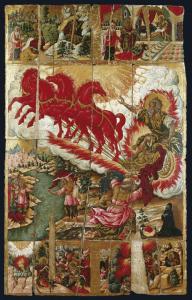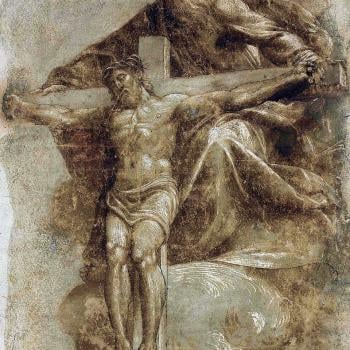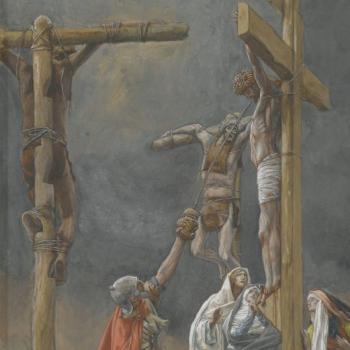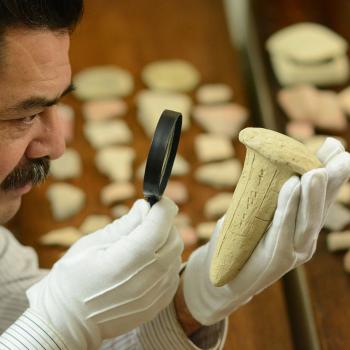
Family and friends have shared with me visions and dreams they have had of my son Christopher since he endured a traumatic brain injury in January. The dreams and visions portray Christopher in a conscious and restored state. Well, I have also experienced a unique mental impression of Christopher recently. It involves a wheelchair and a chariot of fire.
Several days ago, a nurse and I shared with Christopher that the CNAs would be placing him in his wheelchair to take him outside his room. Due to a variety of factors, including COVID restrictions for residents, my son had been cloistered in his room for some time.
Immediately, when we informed him of the outing, Christopher became animated. You could sense from his facial mannerisms that he looked forward to getting outside the confines of his personal quarters. The staff positioned the Hoyer Lift by his bed and transferred Christopher in the sling to the wheelchair. As he was in dangling in midair in the sling, the nurse said affectionately to Christopher that he was flying. After he touched down on the ‘tarmac’ and was secure in the chair, I pushed Christopher in his wheelchair down the hall and around the facility. It was a delight to be out and about with my son. I treated the hallway a bit like a track, as one can circle back around the facility to where one started. A different nurse who saw us near the outset of our trek commented enthusiastically a few minutes later how quickly we made our rounds. Christopher’s wheelchair had been transformed into a chariot of fire.
I then told Christopher that it was rather cold outdoors and that I would place his chair by a large window inside a facility gym so we could look outside. The weather had changed so suddenly, and I did not have a hat or sweatshirt for him. While Christopher does not communicate using words presently, his guttural noises and facial mannerisms tell me a great deal. Let’s just say my son was not happy with my decision. His eyes grew red. He looked so upset that I thought he was tearing up. Christopher made sounds that came across like protests. So, I said to him, “Okay. Okay. I will get a thick blanket and cover you up so we can go outside.”
A few minutes later, I was pushing Christopher’s wheelchair outside the building. His eye color and facial mannerisms changed quickly. He was quiet as he took in the sights of the gray sky above his head and the golden autumn leaves on a nearby tree.
My wife Mariko, Christopher’s Mom, has told me on different occasions over the past several months that she prays that Christopher will be able to open his eyes and see the sky and trees again and behold the beauty of nature. I hope that this first outing is just the beginning of God answering Mariko’s prayer.
I took a picture of Christopher looking upward with his mouth slightly open and with a pleasant expression of subdued joy and wonder. That picture is worth a thousand words, as is my mental image of Christopher’s wheelchair being transformed into a chariot of fire.
Over the past several days, I have been thinking of the literary backdrop to the “chariots of fire” imagery. I called to mind the biblical passages in 2 Kings 2 and 2 Kings 6 where the imagery appears. In the first passage, God takes the prophet Elijah to heaven in a chariot of fire while his protégé Elisha stands by and watches. Here’s the text:
When they had crossed, Elijah said to Elisha, “Tell me, what can I do for you before I am taken from you?”
“Let me inherit a double portion of your spirit,” Elisha replied.
“You have asked a difficult thing,” Elijah said, “yet if you see me when I am taken from you, it will be yours—otherwise, it will not.”
As they were walking along and talking together, suddenly a chariot of fire and horses of fire appeared and separated the two of them, and Elijah went up to heaven in a whirlwind. Elisha saw this and cried out, “My father! My father! The chariots and horsemen of Israel!” And Elisha saw him no more. . . . (2 Kings 2:9-11; NIV)
In the second passage, Elisha asks God to open his servant’s eyes when they see the King of Aram’s forces descending on them to capture Elisha for revealing to the King of Israel Aram’s battle schemes. Here’s the passage:
This enraged the king of Aram. He summoned his officers and demanded of them, “Tell me! Which of us is on the side of the king of Israel?”
“None of us, my lord the king,” said one of his officers, “but Elisha, the prophet who is in Israel, tells the king of Israel the very words you speak in your bedroom.”
“Go, find out where he is,” the king ordered, “so I can send men and capture him.” The report came back: “He is in Dothan.” Then he sent horses and chariots and a strong force there. They went by night and surrounded the city.
When the servant of the man of God got up and went out early the next morning, an army with horses and chariots had surrounded the city. “Oh no, my lord! What shall we do?” the servant asked.
“Don’t be afraid,” the prophet answered. “Those who are with us are more than those who are with them.”
And Elisha prayed, “Open his eyes, Lord, so that he may see.” Then the Lord opened the servant’s eyes, and he looked and saw the hills full of horses and chariots of fire all around Elisha. (2 Kings 6:11-17; NIV)
William Blake picked up on the “chariots of fire” imagery centuries later and embedded it in his poem “Jerusalem,” which was transposed into a celebrated English hymn by the same title. Here’s Blake:
Bring me my Bow of burning gold:
Bring me my arrows of desire:
Bring me my Spear: O clouds unfold!
Bring me my Chariot of fire!
In more recent times, the image “chariots of fire” became the title of the Academy award-winning film about Eric Liddle and William Abrahams and their pursuit of Olympic gold during the 1924 Olympics. As one commentator put it, “Eric Liddell, a devout Scottish Christian . . . runs for the glory of God, and Harold Abrahams, an English Jew . . . runs to overcome prejudice.”
All these images and the soundtrack for the film and hymn “Jerusalem” serve as a playlist of hope and inspiration for me as we run the marathon race of life with Christopher.
Mariko and I have been working with staff at Christopher’s care facility to get him up in his chariot of fire on a regular basis. Christopher’s wheelchair is his best option presently for getting him from one place to another with his feet near the ground. My son loves to run. He ran several miles daily prior to his injury. He has the lungs of an athlete, as one of his respiratory therapists has said. Those strong lungs have helped him greatly with managing his secretions and guarding against pneumonia.
There is a lot of effort that goes into getting Christopher from his bed to his chariot of fire. But it is so worth it. Such movement is important for stimulating his brain. We continue to pray that the neurons in his brain fire and rewire, for Christopher to increase in conscious deliberations, and to gain back his motor skills. Our son has a long way to go. May he get there.
We all have a long way to go. You are not simply watching our race for life with Christopher. You are participants with us in this marathon race. You are running your own race for life, too.
In the movie Chariots of Fire, there is a scene where Eric Liddell compares running a race to the life of faith. Liddell—a man destined for Olympic gold and missionary life in China, where he died in a civilian internment camp in 1945 during World War II—talks about a race and faith being difficult. He reflects on how a race and the journey of faith involve keen concentration of will, an energetic soul, and a sense of elation when victory occurs. Liddell says that we all run in our own way and that there is no set formula for how to win the race. He asks and answers where the power comes from to finish the race—from within each person.
I pray that God will continue to open my son’s eyes to see his surroundings filled with horses and chariots of fire all around him. May God open each of our eyes to see these same horses and chariots of fire, when the obstacles and challenges of life seem so overwhelming and lead us to panic, like Elisha’s assistant.
When all else appears to give way and we need a lift, what song will be playing in our minds? What image will be dancing in our heads? Join Christopher and me in reciting Blake’s glorious lines from the following stanza and repeat with us the closing words, “Bring me my Chariot of fire!”
Bring me my Bow of burning gold:
Bring me my arrows of desire:
Bring me my Spear: O clouds unfold!
Bring me my Chariot of fire!
For all the updates on this unfathomable journey with Christopher, please go to this link. Thank you.












